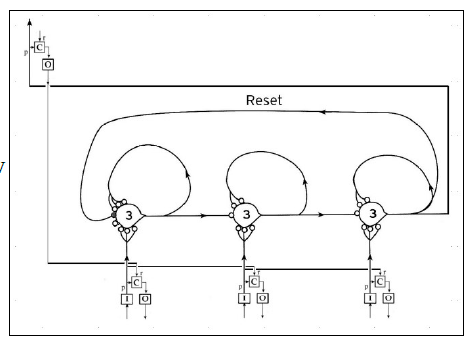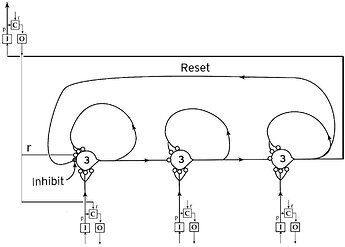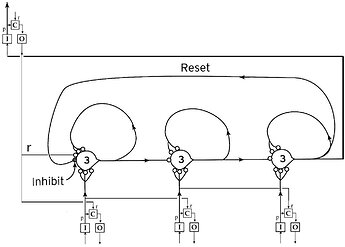The following is quoted from pp. 58-60 of
“The problem of amnesia in waking and hypnotic states”, in Rossi, E. L. (ed.) 1980, The collected papers of Milton H. Erickson on hypnosis, Vol. III: Hypnotic investigation of psychodynamic processes, NY: Irvington, pp. 58-70.
Perhaps the best examples of spontaneous amnesias of the waking state are those that occur frequently in the experience of most people. One example is the experience of being introduced to someone, shaking hands and acknowledging the introduction by repeating the person’s name, and a moment or so later wondering desperately what the person’s name is. Another common experience is asking directions when intent on reaching a certain destination, repeating the directions that are given, only to wonder a few minutes later at which intersection to turn and whether to turn right or left.
Then there is that common occurrence where a professor carefully specifies to an attentive class the day, the hour, and the room in which the final examination of the course is to be given, only to find members of the class a few minutes later in the hallway wrongly debating the hour, the day, and the room specified. This rapidly teaches instructors to say, as a preliminary remark, “Now write this down carefully,” before giving such vital information. Even so, students highly interested in the course and fully expectant of a high grade will discover their need later, perhaps by the time they reach the dormitory, to consult their notes in order to know what instructions they had been given.
One may conclude that only the second of these—forgetting a step in the directions one has been given—has to do with sequence control. Consider now the author’s comment on these:
In all three examples the primary element is something quite different from lack of attentiveness. In the first instance the social gathering is of primary importance—not some stranger’s name, no matter how attentively received. In the second instance the reaching of the destination, not the precise noting of distances, is of primary importance. Similarly, in relationship to the predicament of the students the final completion of the course is important, not the hour of the exam, which is usually different from the class hour; not the day, which has no bearing upon the course; not the specified room, which so often is not the regular classroom. We tend to spontaneously forget the parts or details of a situation when we are fixated or motivated by the total Gestalt or major goal of that situation.
Still another type of peculiar and spontaneous waking amnesia is that encountered when asking directions from a stranger for a specific goal well known to that stranger. For example, the author was riding in a car with some colleagues when we arrived at a small town. our general information was that the meeting we were to attend was being held in a hall across the street from St. Mary’s Church. Noting a woman who had just concluded an animated conversation with a gas station attendant, our driver stopped at the curb and, as the woman reached the sidewalk, asked her if she knew where St. Mary’s Church was. She answered promptly, “I certainly do. I go there for Mass every Sunday. Just drive straight ahead for exactly one mile, and at the top of the hili there, turn right. It’s right near the corner.” our driver thanked her, whereupon she asked curiously why we were going there at that time in the evening. The driver explained that we were attending a medical meeting in a building opposite the church. She replied, "Oh, yes, I know that medical building, but it’s nor straight across from the church. It’s about two houses further down.’ She was thanked, and our driver drove on two blocks, then stopped the car and declared, “Something is wrong. She was too explicit, too precise, so completely certain in each statement. I’m going back to that gas station and get correct directions.”
The gas station attendant was told precisely the directions the woman had given. The man looked puzzled, then his face cleared and he laughed and said, “My wife gave you exactly the right directions, only she must have forgotten she was downtown and not at home. you’re headed in the right direction now, but at that stoplight one block down, turn right, go about three blocks, and at the top of the hill you’ll see it-the only church there.” His directions were correct.
What brings about such an occurrence? There is a dominance of a well-established item of memory that takes precedence over the incidental, immediate realities of the situation which are spontaneously forgotten so that a response is made accurately in terms of the well-established memory belonging to a totally different situation. More than once the author has experimentally inquired for directions to the location of a landmark familiar to him. Upon receiving explicit instructions, the author has carefully repeated them with an introduction such as, “Now let’s see, we are at the corner of 7th and Wall Street and. . . .” Not infrequently the informant has remarked in astonishment, “Oh, no! I told you the way I usually think. I just forgot for the moment that I was here,” and then corrects the previous instructions.
In some of these examples it is not obvious that sequence control is involved, and concurrent control of more than one sequence in parallel, but I believe that case is not difficult to demonstrate.
The PCT model suggests that in sequence control the reference for Step n+1 ‘appears’ from memory by association with the perceptions that result from control of Step n. The relation of multitasking to working memory supports the hypothesis that the ‘amnesia’ described here is due to the need to devote working memory to the successive steps of a sequence and limitations of working memory in supporting concurrent sequence control.
Discuss.



